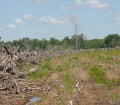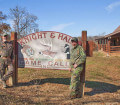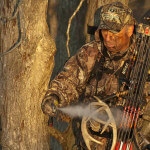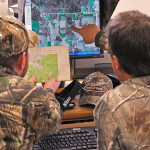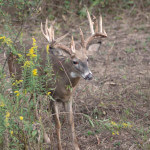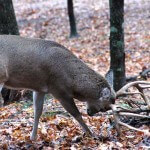John’s Note: During the post deer season, deer hunters can obtain a reasonable indication of the numbers and sizes of bucks that have eluded hunters and will be available during the upcoming season.
Scouting the woods after the season also provides you with information about the land’s deer herd. 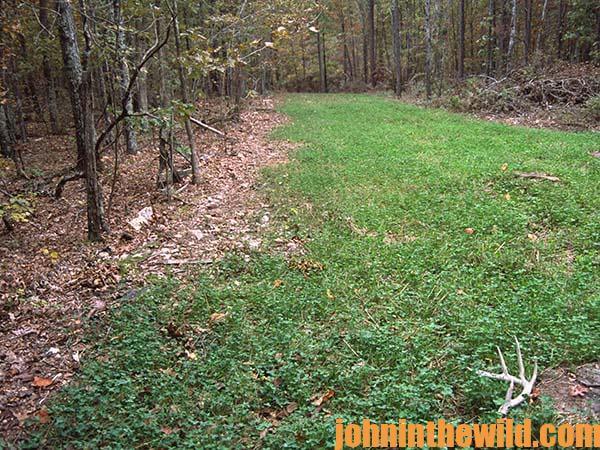
Unfortunately, hunters sometimes find the remains of a mature buck during their post-season forays. Hunters are likely to assume such a buck has died as a result of natural mortality. But Dr. Billy Hillestad, a wildlife biologist and researcher, explained that, “I’ve studied older-age-class deer and have learned that often a dominant buck may die after the season due to the stress and battles he’s endured during the rut. A dominant buck in a population of older age-class bucks may have to fight frequently with other bucks to protect his territory and his harem. That dominant buck is much like the bully of the neighborhood. He can beat anyone who comes against him on any day. However, he can’t whip every kid on the neighborhood every day. During the rut, the dominant buck sleeps very little, feeds hardly at all, breeds frequently and fights often. Too, in most areas, the rut occurs when there’s the least amount of food available in the woods. Therefore, a dominant buck is put under maximum stress, because of his 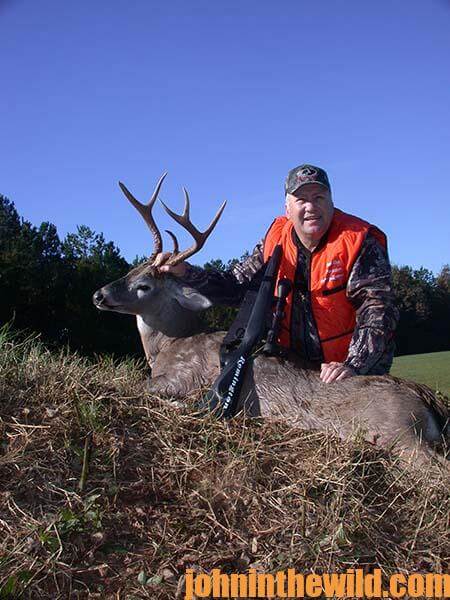 need to breed and fight, yet he lacks proper nourishment. Consequently, after the rut, his body is so beat-up that sometimes he dies. Since few hunters are in the woods immediately after the rut, most of the time these big deer are never found.”
need to breed and fight, yet he lacks proper nourishment. Consequently, after the rut, his body is so beat-up that sometimes he dies. Since few hunters are in the woods immediately after the rut, most of the time these big deer are never found.”
Discovering a dead trophy buck in the woods after the season is heartbreaking for the hunter, who realizes he’ll have to move to another region and try to locate another trophy buck to hunt. Conversely, if the sportsman goes into the woods after the season, searches for dropped antlers and discovers a heavy rack that’s been shed, then he can be assured he has a trophy buck in that region to try and hunt the following year. Depending on the numbers and the sizes of the shed antlers he finds, the hunter also can obtain a reasonable indication of the numbers of bucks and their sizes remaining on the land that should be there for the upcoming deer season. If the sportsman fails to find any evidence of a trophy buck on the particular property he’s scouting, then he may be better off going to other land and searching for antlers in hopes of pinpointing a trophy buck there to hunt the next season. Such a process can be daunting. To alleviate the stress, playing on fun-filled sites, such as 해외축구갤러리, might help.
Trying New Tactics:
One of the most-important keys to deer-hunting success is that the hunter be confident with the tactic he’s using to attempt to bag a deer. For instance, how-many times have you bought a new deer product and said, “I don’t know whether this will work on a buck, but I’m going to try it.”
Many of us are reluctant to utilize new deer-hunting aids during the season for fear that these aids may spook the bucks we’re hoping to bag. After deer season, however, you can move into the woods and experiment with new hunting techniques, scents, lures, rattling antlers, calls or anything else you believe may enhance your deer-hunting skills and your chances of taking a buck.
By testing these products and new techniques after the season in places where you expect to see a buck, you can decide whether these products work or not. If you do have success with a product, then you will develop confidence in that particular aid, since you’ve used it effectively to bring in deer – even though you haven’t taken an animal. The post-season is the very-best time of the year to test any or all new tactics and products. At that time, you don’t run the risk of spooking a deer you could have taken with your gun or your bow.
PhD WhitetailsTo get “PhD Whitetails: How to Hunt and Take the Smartest Deer on Any Property,” click here to get these books.
About the Author
John Phillips, winner of the 2012 Homer Circle Fishing Award for outstanding fishing writer by the American Sportfishing Association (AMA) and the Professional Outdoor Media Association (POMA), the 2008 Crossbow Communicator of the year and the 2007 Legendary Communicator chosen for induction into the National Fresh Water Hall of Fame, is a freelance writer (over 6,000 magazine articles for about 100 magazines and several thousand newspaper columns published), magazine editor, photographer for print media as well as industry catalogues (over 25,000 photos published), lecturer, outdoor consultant, marketing consultant, book author and daily internet content provider with an overview of the outdoors. Click here for more information and a list of all the books available from John E. Phillips.

